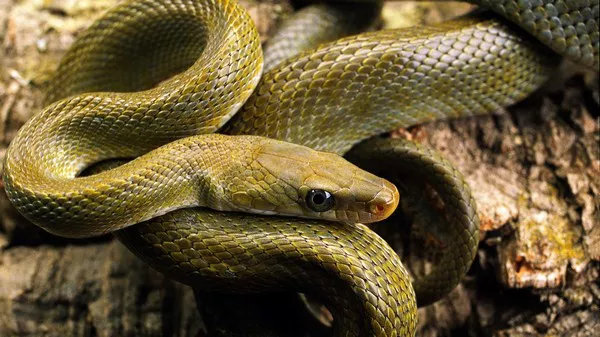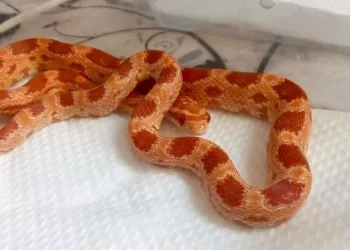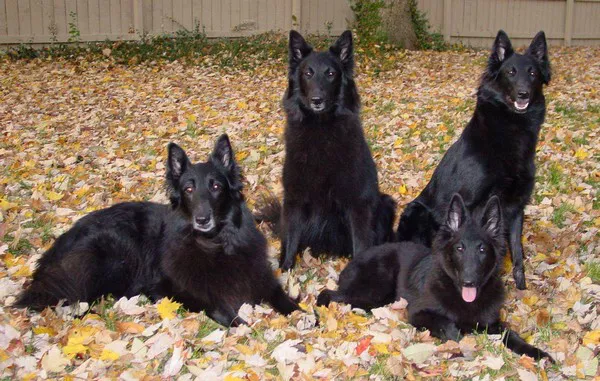The hognose snake, with its distinct upturned snout and docile nature, is a fascinating creature that attracts reptile enthusiasts around the world. Its somewhat intimidating appearance often leads people to wonder: “Is the hognose snake venomous?” While these snakes are not truly dangerous to humans, understanding their venomous capabilities, behavior, and potential risks is important for anyone interested in keeping them as pets or encountering them in the wild.
In this article, we will explore the hognose snake’s venom, its role in the snake’s overall behavior, and how it differs from other venomous snakes. We will also examine the hognose’s habitat, diet, and care requirements, along with tips on how to safely interact with these remarkable reptiles.
Overview of the Hognose Snake
The hognose snake, scientifically known as Heterodon, is a non-venomous species found in North America. It is most commonly recognized by its unique physical feature: a broad, upturned snout, which it uses to burrow into the soil. There are several species of hognose snakes, including the Eastern hognose (Heterodon platirhinos), the Western hognose (Heterodon nasicus), and the Mexican hognose (Heterodon kennerlyi). These snakes are often called “puff adders” or “blow snakes” due to their characteristic behavior of puffing air out of their mouths and inflating their bodies when threatened.
Hognose snakes are small to medium-sized snakes, usually growing to around 1.5 to 3 feet in length. They exhibit a wide range of coloration and patterns, often with shades of gray, brown, yellow, and black. This helps them blend into their natural environments, such as grasslands, forests, and sandy soil areas.
Are Hognose Snakes Venomous?
At the heart of the question of whether hognose snakes are venomous is their unique method of defense. Hognose snakes are often misunderstood due to their theatrical behavior and the confusion surrounding their venomous traits.
The Venom of a Hognose Snake
Hognose snakes possess a mild venom that is used primarily for subduing their prey. The venom is delivered through grooves in the back teeth, rather than through fangs like those found in true venomous snakes such as vipers or cobras. The venom is not powerful enough to harm humans, and the snake’s bite is typically harmless. In fact, the venom’s primary purpose is to assist in immobilizing small prey like amphibians, reptiles, and sometimes rodents, rather than defending the snake from potential predators.
The venom of a hognose snake is considered to be very weak compared to other venomous species. It does not have any lasting effects on humans, and there are no known fatalities associated with hognose snake bites. Most people who are bitten experience only mild symptoms, such as a small puncture wound, slight redness, or swelling. These symptoms typically resolve on their own without the need for medical intervention.
Differences Between Hognose Venom and True Venomous Snakes
To understand just how non-threatening the hognose snake’s venom is, it is important to compare it with the venom found in truly dangerous snakes, such as pit vipers or cobras. True venomous snakes use their venom for a variety of purposes, including immobilizing prey, aiding in digestion, and defending themselves from predators. The venom of these snakes is potent, containing a combination of neurotoxins, hemotoxins, or cytotoxins that can cause severe damage to the body. Bites from these snakes can lead to tissue damage, organ failure, and even death if not treated promptly.
In contrast, the hognose snake’s venom is very mild and is not intended to be used against humans. While a bite from a venomous snake like a rattlesnake may cause significant pain, swelling, and potentially life-threatening reactions, a bite from a hognose snake is generally nothing more than a temporary nuisance. The venom of a hognose snake is primarily designed to disable small prey, not to serve as a powerful defensive weapon.
Hognose Snake Defense Mechanisms
Although hognose snakes are not considered truly dangerous, they have developed several interesting defense mechanisms that can make them seem more threatening than they really are. These behaviors are often a result of the hognose’s ability to “fake it” when faced with danger, deterring predators without the need to use their venom.
The “Hooding” and “Puffing” Behavior
One of the most iconic behaviors of the hognose snake is its “puffing” or “hooding” display. When threatened, the hognose will flatten its neck, making its head appear larger and more menacing. It will also exhale air forcefully, creating a puffing sound. This behavior is intended to make the snake appear larger and more intimidating to potential predators.
Playing Dead (Thanatosis)
Another well-known defense mechanism of the hognose snake is its ability to play dead, a behavior called “thanatosis.” When a hognose snake feels threatened, it may roll onto its back, open its mouth, and remain motionless. This dramatic display of death is believed to confuse predators, making them lose interest in the snake as a potential meal. In some cases, the snake will even secrete a foul-smelling substance from its cloaca to enhance the illusion of being dead.
The Use of Venom for Prey Subjugation
As previously mentioned, hognose snakes use their venom for immobilizing prey, rather than for self-defense. The venom is mild and primarily targets amphibians, such as toads and frogs, which are part of the hognose’s natural diet. By delivering a small amount of venom to their prey, hognose snakes can quickly immobilize them, making it easier to swallow.
In general, the venom of a hognose snake is not considered dangerous to humans, and it is not used in the same way as the venom of a cobra or rattlesnake. The venom’s primary purpose is to facilitate hunting, not to deter predators.
How Dangerous is the Hognose Snake to Humans?
Despite its mildly venomous nature, the hognose snake poses very little danger to humans. As mentioned earlier, the venom is weak, and bites from a hognose snake are rarely problematic. While the snake may bite if it feels threatened, it is typically a defensive response rather than an offensive one.
Venomous Snake Bite Symptoms
In the rare event that a hognose snake bites a human, the symptoms are usually mild. A person may experience a small puncture wound, slight swelling, and redness at the site of the bite. There may also be some mild pain, but this is typically short-lived and does not require medical treatment. In most cases, the symptoms resolve on their own within a few hours.
For individuals who have allergies to snake venom or are particularly sensitive to insect bites, there may be more significant reactions. However, such cases are exceedingly rare. In general, hognose snake bites are considered harmless to humans.
First Aid for a Hognose Snake Bite
If you are bitten by a hognose snake, the first step is to stay calm. While it is important to clean the bite area with soap and water to prevent infection, there is no need for panic. In most cases, the bite will heal on its own within a short period of time.
For individuals who experience swelling or pain that lasts longer than a few hours, seeking medical advice is a good precaution. However, serious reactions are very uncommon.
Hognose Snake Care and Handling
For reptile enthusiasts considering the hognose snake as a pet, understanding their care requirements and how to handle them safely is essential. Here are some key aspects of hognose snake care and handling:
Habitat Requirements
Hognose snakes are native to a variety of habitats, including woodlands, grasslands, and sandy soils. They are burrowing creatures and require an enclosure that mimics their natural environment. A 20-gallon tank is typically sufficient for a single adult hognose snake, with bedding that allows for burrowing, such as aspen shavings or cypress mulch.
The temperature in the enclosure should be maintained between 75°F and 85°F during the day, with a slight drop at night. A heat lamp or under-tank heater can be used to provide the necessary warmth. It is important to also provide a hiding spot and a shallow water dish for hydration.
Feeding
Hognose snakes are primarily carnivorous and feed on small vertebrates such as amphibians, reptiles, and rodents. In captivity, they can be fed appropriately sized mice or rats. It is essential to provide a varied diet, as hognose snakes may refuse food if their diet becomes monotonous.
Handling and Interaction
Hognose snakes are generally docile and easy to handle. However, like all snakes, they may become defensive if they feel threatened. It is important to approach them gently and avoid sudden movements. When handling a hognose snake, always support its body and avoid stressing the animal. Frequent handling is not necessary, but brief interactions can help build trust between the snake and its keeper.
Conclusion
In conclusion, while the hognose snake does possess mild venom, it is not considered venomous in the same way that true venomous snakes like cobras or vipers are. The venom of a hognose snake is weak and has little to no effect on humans. Bites from hognose snakes are rare and generally cause only mild symptoms such as swelling and redness. These snakes are more likely to rely on their impressive defense mechanisms, such as puffing air, playing dead, and bluffing, to deter predators.
For those who are interested in keeping a hognose snake as a pet, these creatures make excellent companions due to their calm nature and low risk to humans. With proper care and attention to their habitat, diet, and handling, a hognose snake can thrive in captivity and provide a fascinating addition to any reptile collection.
Whether encountered in the wild or kept as a pet, the hognose snake is an intriguing species that offers a unique perspective on the diverse ways that animals adapt to their environments. By understanding their behavior and the true nature of their venom, we can appreciate the hognose snake for the remarkable creature it is.
Related Topics:

























